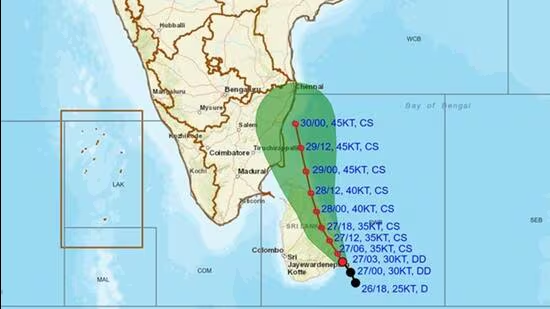Have you ever wondered why winter feels a little heavier on the body—sluggish mornings, low mood, more infections and that constant sense of tiredness? One big reason is a drop in vitamin D levels. Since most of our vitamin D comes from sunlight, winter makes it harder for the body to produce enough of this essential nutrient. In fact, cloudy days, limited outdoor time, darker skin pigmentation, sunscreen, and full-sleeve clothing increase the risk of vitamin D deficiency.
According to Dietician Vidhi Chawla, founder of FISICO Diet and Aesthetic Clinic, says vitamin D supports bone strength, immunity, muscle health, mental wellbeing, and even skin repair. With an estimated 76 percent of Indians reportedly deficient in vitamin D, the need to replenish it through food becomes even more important during winter. Fortunately, there are some vitamin D-rich foods, which can help you fulfill your daily dose.
Why does your body need vitamin D?
Vitamin D is not just a vitamin your bones needs. Dietician Chawla tells Health Shots that without enough vitamin D, your body cannot absorb calcium properly, putting bone strength and muscle function at risk. Here’s what vitamin D does for you:
- Supports stronger bones, muscles, and teeth
- Boosts immunity and helps prevent recurrent infections
- Lifts mood and helps manage seasonal low moods
- Supports healthy skin repair
- Keeps energy levels stable
Adults aged 19–70 need about 15 micrograms of vitamin D per day, according to the US National Institutes of Health.
9 vitamin D-rich foods to add to your winter diet
Exposure to sunlight triggers the production of vitamin D3. Just 10 to 30 minutes of midday sunlight on bare skin, depending on skin type, is usually sufficient. But during the winter season, due to a lack of sunlight, it gets a bit difficult. So, here are vitamin D-rich foods that can help you fulfill your daily requirement of this essential nutrient:
1. Fatty fish
Salmon, sardines, mackerel, oysters, and shrimp are excellent sources of vitamin D. Chawla explains that fish-based vitamin D is more easily absorbed by the body than plant-based sources. A study in The Journal of Steroid Biochemistry and Molecular Biology found that wild salmon contains significantly more vitamin D than farmed salmon. Include fatty fish 2–3 times a week for best results.
2. Egg yolk
Do not skip the yolk, yes, because it contains vitamin D along with healthy fats. According to Food Data Central, one egg yolk provides 37 IU of vitamin D, about 5 percent of your daily requirement. For people who do not eat fish, eggs are one of the simplest alternatives.
3. Mushrooms
Mushrooms naturally make vitamin D when exposed to sunlight, just like we do. A Nutrients journal study found that wild mushrooms contain more vitamin D than commercially grown ones, but both still contribute. Add them to soups, stir-fries, and salads during winter.
4. Cod liver oil
Cod liver oil is rich in vitamin D and omega-3 fatty acids. A study published in Nutrients highlighted its use in improving bone health and treating conditions like rickets and psoriasis. For those who dislike fish or eggs, this can be a great substitute.
5. Yoghurt or curd
Some packaged yoghurts are fortified with vitamin D and also support gut health. Check labels to choose fortified options.
6. Cheese
Cheese, especially varieties like cheddar or Swiss, contains small amounts of vitamin D. Enjoy it in moderation as part of a balanced winter diet.
7. Fortified plant-based milk
Soy, almond, coconut, and oat milk are commonly fortified. These are great options for lactose-intolerant individuals or vegans.
8. Paneer (Indian cottage cheese)
Paneer contains modest amounts of vitamin D and pairs well with vegetarian diets. Include it in curries, salads, or grilled dishes.
9. Fortified orange juice
Fortified juices provide vitamin D along with vitamin C, making them great for immunity.
So, to maintain healthy vitamin D levels this winter, add these foods to your diet. They will help you, especially if you fall ill, feel tired, or experience bone or muscle pain during the winter season.































